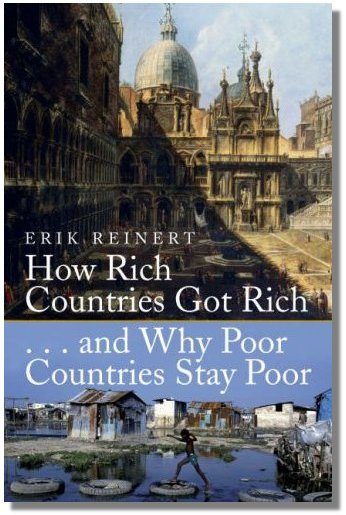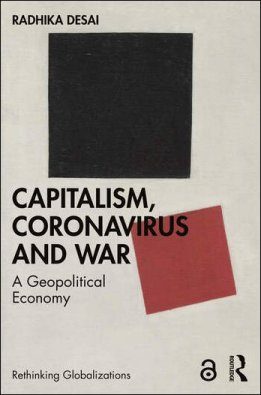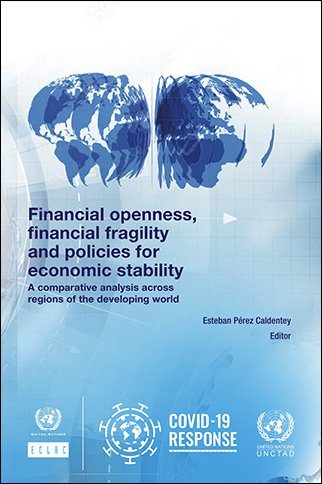Publisher: Third World Network Year: 2023 No. of pages: 42 Download now About the Book…
How Rich Countries Got Rich and Why Poor Countries Stay Poor Authour : Erik S. Reinert (Book Review by Jayati Ghosh)

Publisher: Constable & Robinson; UK
ISBN-10: 1845298748
ISBN-13: 978-1845298746
About the Book
In this work, Erik S. Reinert shows how rich countries developed through a combination of government intervention, protectionism, and strategic investment. Reinert suggests that this set of policies in various combinations has driven successful development from Renaissance Italy to the modern Far East. Yet despite its demonstrable success, orthodox development economists have largely ignored this approach and insisted instead on the importance of free trade. Reinert presents a strongly revisionist history of economics and shows how the discipline has long been torn between the continental. Renaissance tradition on one hand and the free market theories of English and later American economics on the other. He argues that our economies were founded on protectionism and state activism and could only later afford the luxury of free trade. When our leaders come to lecture poor countries on the right road to riches they do so in almost perfect ignorance of the real history of mass affluence.
About the Author
Erik S. Reinert, author of Globalization, Economic Development and Inequality: An Alternative Perspective (2004), is Professor of Technology, Governance and Development Strategies at Tallinn University of Technology, Estonia, and President of The Other Canon Foundation, Norway. He is one of the world’s leading heterodox development economists and is based in Norway.
Review
A Worldly Philosopher for Our Times
Erik Reinert’s new book asks the crucial development questions and lucidly provides a vast historical sweep that critiques mainstream wisdom and posits plausible alternative explanations. The virtues of realism have always been underplayed by most of the economics profession. This is a greater issue of concern than it would be for most professions, simply because economists – indeed, often the most unrealistic of them – tend to exercise a disproportionate influence upon policies that affect the lives of many millions of people.
This is only one of the reasons why Erik S. Reinert’s new book (“How rich countries got rich and why poor countries stay poor”, London, Constable & Robinson 2007) is so important. As evident from his title, Reinert asks the most fundamental questions about economic development, and proceeds to answer them with clear logic, a sweeping grasp of history and an immensely readable style. In the process, he comprehensively shatters a number of prevailing myths within the mainstream economics profession about the process of economic development and what societies must do to achieve that elusive goal of “developed country” status.
Reinert begins with an acute assessment of what is wrong, methodologically and axiomatically, with the long stream of economic thinking that traces its origins in David Ricardo’s work. He argues that Ricardo’s theory of comparative advantage, which is the lynchpin of so much economic thinking, was deeply unreal in its assumptions. It even provided a foundation for colonialism, by making it morally defensible to keep some countries as producers of raw materials only.
The large number of simplifying assumptions that make standard theories less relevant to the actual world are probably well known. But Reinert hones in on some of the most crucial, such as “the equality assumption”, which effectively assumes away all differences between human beings, between economic activities and between nations. One classic example of this is the concept of the “representative firm”, which equates the giant firm Microsoft with a twelve year old self-employed shoeshine boy in a Lima slum.
Other assumptions, such as that of “perfect information” are equally suspect, while the totality of assumptions leads to the theoretical loss of both time (history) and space (geography). This in turn means that, despite some recent attempts to partially incorporate these elements, there is a tendency to downplay the importance of increasing returns, technological change and synergies.
In consequence, four important economic concepts for understanding the process of economic development were lost to economics, despite the fact that early thinkers emphasised all of these. The first is the concept of innovation (which, it is worth noting, is the key focus of policy makers in China today). The second is the insight that economic development results from synergistic effects, and that people sharing a job market with innovative industries will have higher wages than others. The third is that different economic activities can be qualitatively different carriers of economic development, so that it matters which specialisation is chosen. Reinert’s final concern is that the labour theory of value posits a system of exchange whereby labour hours are void of any other qualities, which according to him disregards the important connections between mode of production, technology and institutions that underlie the labour embodied in commodities.
The main problem is that the ahistorical theorising generated by all this has replaced and therefore lost a far richer tradition of social and economic thought, which Reinert characterises as “The Other Canon”. As he puts is, “before Adam Smith it was often understood that economic development was based on collective rent-seeking, originating in synergies of increasing returns, innovations and division of labour that were found clustered only in the cities.” (page 79)
Thus, the origins of the concept of increasing returns are not to be found in Adam Smith’s all-too-famous example of the division of labour in a pin factory, but in the writings of Xenophon, whose book Oeconomicus in the 4th century B.C. Greece gave economics its name. In 1613 the Italian Antonio Serra described the positive effects of increasing returns with greater clarity than Smith, while the early 18th century German economist Ernst Ludwig Carl used the same pin factory example first. In the same vein, Reinert shows that many of the so-called novelties of modern economic modelling are more than the partial resurrection of earlier insights of the Other Canon, dusted off to be displayed in spangling new colours to a profession that has lost its own history.
So how does the Other Canon provide an answer to the basic question posed in this book? Reinert argues that the key concept is not comparative advantage or free trade, but rather what Enlightenment economists called emulation. The toolbox of emulation contains a number of instruments, and there is a useful listing of the main ones. (pages 82-83) They include:
- recognition of wealth synergies around increasing returns activities and conscious targeting, support and protection to these activities, including temporary monopolies and patenting, tax breaks, export bounties and cheap credit.
- maximising the division of labour through a diversified manufacturing sector.
- relative suppression of landed nobility and other groups with vested interests based in the production of raw materials.
- strong support for the agricultural sector, combined with restraints on export of raw materials.
- emphasis on learning and education.
- attracting foreigners to work in targeted activities.
All this was understood by more than the thinkers of the Other Canon. Indeed, according to Reinert, history’s first deliberate large-scale industrial policy – the promotion of wool production in 15th century England – was based on an observation of what made the richer areas of Europe rich: that technological development in one field in one geographic area could extend wealth to an entire nation. Subsequently, there have been systematic attempts to suppress this basic insight: “wealthy nations keep poor countries poor based on theories postulating the non-existence of the very factors that created their own wealth.” (page 79)
The book provides numerous examples of how success was achieved, along with more depressing examples of how the opposite has been foisted on too many countries that remain poor. In fact, the process is not simple marginalisation or exclusion from benefits of development. Rather, in many countries there has been the opposite of progress, that is retrogression and primitivisation, because of policies that have not only prevented the virtuous cycle resulting from emulation but actually destroyed existing production economic activities. The chilling examples of Mongolia, Rwanda and Peru are examples of diminishing returns at work, created by exposure to external economic forces that destroyed the capacity for diversification, innovation and technical change within these societies.
This in turn leads to a comprehensive critique of the “Washington Consensus” policies and their slightly modified descendants. Reinert demolishes each of the maxims that are now so routinely recited to developing country policy makers, such as getting prices right, getting property rights right, getting institutions right, getting governance right, getting competitiveness right, and so on.
In another powerful chapter, he shows how the arguments in favour of globalisation – especially those of economies of scale, technical change and synergies – are also the arguments against globalisation when the process prevents some economies from achieving these. This leads to a critique of what Reinert calls “palliative economics” as exemplified in the Millennium Development Goals, which are aimed at easing the pains of poverty rather than making the fundamental structural changes that result in true economic development.
The real aim, according to Reinert, should be to focus on the lost art of creating middle-income countries, where all inhabitants have a purpose and claim on the necessities of life and at least some of its pleasures. This requires “getting the economic activities right”, since the only way that vicious circles of low development can be broken is by first changing the productive structure itself.
Reviving these old but crucial insights in a contemporary context and in an effective and stimulating way is no mean task. Erik Reinert’s intellectual lineage has been described as “neo-Schumpeterian”. But in this book he shows that his work extends beyond such simplifying categories to be in the best tradition of heterodox economics: historically informed, conceptually powerful and compelling on policy matters.



